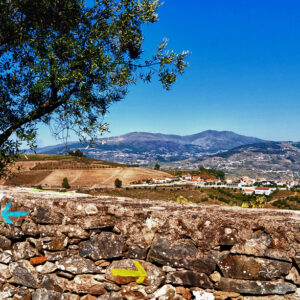Introduction
Overview of Coimbra
Coimbra, located in central Portugal, is a city steeped in history and culture. With a rich and diverse past, it has been inhabited since Roman times and has served as the capital of Portugal during the Middle Ages. Today, Coimbra is renowned for its prestigious university, the University of Coimbra, which was founded in 1290 and is one of the oldest universities in the world. The city is also home to numerous historical landmarks, including the stunning Coimbra Cathedral and the ancient Roman aqueduct. Visitors to Coimbra can immerse themselves in the city’s fascinating history, explore its charming medieval streets, and experience its vibrant cultural scene.
Importance of Coimbra in Portuguese history
Coimbra holds immense importance in Portuguese history. As one of the oldest cities in the country, it has witnessed the rise and fall of empires, the birth of kings, and the shaping of national identity. Coimbra was once the capital of Portugal and a center of cultural and intellectual development. It is home to one of the oldest universities in Europe, the University of Coimbra, which has played a significant role in the education and enlightenment of generations. The city’s historical significance can be seen in its architecture, with stunning landmarks such as the Coimbra Cathedral and the Monastery of Santa Cruz. Coimbra’s rich history and cultural heritage make it a must-visit destination for anyone interested in exploring the roots of Portugal’s past.
Purpose of the article
The purpose of the article ‘Coimbra Through the Ages: A Historical Guide’ is to provide readers with a comprehensive and informative overview of the city’s rich history. It aims to delve into the various eras and significant events that have shaped Coimbra, from its ancient origins as a Roman settlement to its prominence as a medieval capital and its role as a center of learning and culture. Through this article, readers will gain a deeper understanding of Coimbra’s historical significance and appreciate the city’s unique blend of architectural styles, cultural traditions, and academic heritage.
Pre-Roman Era
Early settlements in the Coimbra region
The Coimbra region has a rich history that dates back to early settlements. Archaeological evidence suggests that humans have inhabited this area for thousands of years. The earliest known settlements in the Coimbra region can be traced back to the prehistoric period, with evidence of Neolithic and Bronze Age communities. These early settlers relied on agriculture and hunting for their livelihoods, and their presence laid the foundation for the development of the city we know today. The fertile lands and strategic location of the Coimbra region attracted various civilizations throughout history, including the Romans, Moors, and Christians, each leaving their mark on the cultural and architectural landscape. Exploring the early settlements in the Coimbra region offers a fascinating glimpse into the past and allows us to appreciate the historical significance of this area.
Celtic influence in Coimbra
Coimbra, a city steeped in history, has been shaped by various civilizations throughout the ages. One of the earliest influences on Coimbra can be traced back to the Celts. The Celtic influence in Coimbra is evident in its ancient ruins, artifacts, and cultural traditions. The Celts, known for their advanced knowledge in agriculture and metalworking, left a lasting impact on the city. Today, visitors can explore the remnants of Celtic settlements and experience the rich heritage that the Celts have left behind. From the intricate Celtic designs found in pottery to the ancient Celtic rituals still practiced, the Celtic influence in Coimbra is a testament to the city’s vibrant past.
Roman conquest of Coimbra
The Roman conquest of Coimbra marked a significant turning point in the city’s history. It was during this time that Coimbra transformed from a small settlement into a thriving Roman city. The Romans brought with them advanced infrastructure, including roads, bridges, and aqueducts, which greatly improved the quality of life for the inhabitants. They also introduced new architectural styles and cultural practices that shaped the city’s identity. The influence of the Roman presence can still be seen today in Coimbra’s historic landmarks and archaeological sites. The Roman conquest of Coimbra laid the foundation for the city’s future development and left a lasting legacy that continues to be celebrated and appreciated.
Medieval Period
Visigothic rule in Coimbra
Coimbra, a city steeped in history, was once under Visigothic rule. During this period, from the 5th to the 8th century, Coimbra witnessed significant cultural and architectural developments. The Visigoths left their mark on the city, with the construction of impressive fortifications and the establishment of a thriving urban center. Their rule in Coimbra laid the foundation for the city’s future as a center of power and influence in the region.
Moorish occupation of Coimbra
During the Moorish occupation of Coimbra, which lasted from the 8th to the 11th century, the city underwent significant changes. The Moors introduced new architectural styles, such as the horseshoe arch and intricate geometric patterns, which can still be seen in some of the city’s historic buildings today. They also brought advancements in agriculture, irrigation, and the sciences, contributing to the overall development of Coimbra. The Moorish occupation left a lasting impact on the city’s culture, architecture, and identity, making it an important period in Coimbra’s history.
Christian reconquest and establishment of Coimbra as a bishopric
The Christian reconquest of Coimbra in the 11th century marked a significant turning point in the city’s history. After centuries of Muslim rule, Coimbra was liberated by the forces of King Ferdinand I of León and Castile. With the reconquest, Coimbra became an important center of power and influence in the region. The establishment of Coimbra as a bishopric further solidified its status as a religious and cultural hub. The city’s cathedral, built in the Romanesque style, became a symbol of the Christian faith and a testament to the city’s newfound Christian identity. The bishopric played a crucial role in shaping the development of Coimbra, attracting scholars, artists, and religious figures from across Europe. Today, the legacy of the Christian reconquest and the establishment of Coimbra as a bishopric can still be seen in the city’s architecture, traditions, and cultural heritage.
University of Coimbra
Foundation and early years
Coimbra, a city located in central Portugal, has a rich and fascinating history that dates back to its foundation and early years. The city was founded by the Romans in the 2nd century BC and was originally known as Aeminium. During this time, Coimbra served as an important trading center and played a significant role in the region’s commerce. Over the centuries, the city witnessed the rise and fall of various civilizations, including the Visigoths and the Moors. However, it was during the medieval period that Coimbra truly flourished as the capital of Portugal. The city became a center of learning and culture, with the establishment of the University of Coimbra in 1290. Today, Coimbra stands as a testament to its rich history, with its well-preserved historical sites and vibrant cultural scene.
Growth and development of the university
The growth and development of the University of Coimbra has played a crucial role in shaping the city’s history. Established in 1290, it is one of the oldest universities in the world. Over the centuries, the university has expanded its academic programs, attracting students and scholars from all over the globe. The institution has been a center of intellectual and cultural exchange, fostering innovation and academic excellence. Today, the University of Coimbra continues to be a leading educational institution, contributing to the advancement of knowledge and the development of the city.
Significance of the university in Portuguese education
The University of Coimbra holds great significance in the history of Portuguese education. Founded in 1290, it is one of the oldest universities in continuous operation in the world. Throughout the ages, the university has played a vital role in shaping the intellectual and cultural landscape of Portugal. It has been a center of knowledge, attracting scholars and students from all over the country and beyond. The university has been a bastion of academic excellence, fostering groundbreaking research and producing generations of highly skilled professionals. Its rich history and prestigious reputation make the University of Coimbra a symbol of academic excellence and a source of national pride for Portugal.
Coimbra in the Age of Discoveries
Coimbra’s role in maritime exploration
Coimbra, a city rich in history and culture, played a significant role in maritime exploration during the Age of Discovery. As one of the major ports in Portugal, Coimbra became a hub for sailors and explorers embarking on voyages to unknown lands. It was from Coimbra that renowned explorers such as Vasco da Gama and Ferdinand Magellan set sail on their groundbreaking expeditions. The city’s strategic location along the Mondego River allowed for easy access to the Atlantic Ocean, making it an ideal starting point for maritime adventures. Coimbra’s maritime prowess not only contributed to the expansion of Portuguese influence but also shaped the course of world history. Today, visitors can still feel the echoes of Coimbra’s maritime past as they explore its historic streets and visit its maritime museums.
Influence of the discoveries on Coimbra
The discoveries made during the Age of Exploration had a significant influence on the city of Coimbra. As Portugal emerged as a leading maritime power, Coimbra became a hub for intellectual and cultural exchange. The city’s university, founded in 1290, played a crucial role in disseminating knowledge and ideas brought back from the newly discovered lands. Scholars and students from all over Europe flocked to Coimbra to study the latest scientific and geographical advancements. The city’s libraries and academic institutions became repositories of valuable information, contributing to the development of various fields of study. Coimbra’s architecture and urban planning also underwent changes influenced by the discoveries, with new styles and techniques being incorporated into the city’s buildings. The influence of the discoveries on Coimbra can still be seen today, making it a fascinating destination for history enthusiasts and scholars alike.
Scientific and cultural advancements in Coimbra during this period
During this period, Coimbra experienced significant scientific and cultural advancements. The city became a center of learning and innovation, attracting scholars and intellectuals from all over the world. The University of Coimbra, founded in 1290, played a crucial role in fostering intellectual growth and became one of the oldest universities in Europe. It was during this time that Coimbra became known for its contributions to various fields such as medicine, astronomy, and literature. The city’s libraries, museums, and cultural institutions flourished, preserving and showcasing the rich history and heritage of Coimbra. The scientific and cultural advancements during this period laid the foundation for Coimbra’s reputation as a hub of knowledge and creativity that continues to thrive to this day.
Modern Coimbra
Industrialization and urban development
During the period of industrialization and urban development, Coimbra experienced significant changes. The city saw the establishment of factories and industries, which led to an increase in population and the growth of urban areas. New infrastructure, such as roads, bridges, and railways, were built to support the expanding industries. This period also marked the transformation of Coimbra from a predominantly agricultural society to a more industrialized and urbanized one. The rapid growth and development during this time had a profound impact on the city’s economy, social structure, and overall landscape.
Coimbra as a cultural and artistic center
Coimbra has long been regarded as a cultural and artistic center, attracting visitors from all over the world. With its rich history dating back to Roman times, the city has been a hub of intellectual and artistic activity for centuries. The University of Coimbra, one of the oldest universities in Europe, has played a significant role in shaping the city’s cultural landscape. Its prestigious libraries, museums, and research centers have fostered a vibrant intellectual community, making Coimbra a haven for scholars and artists alike. The city’s architecture, with its stunning medieval buildings and charming narrow streets, is a testament to its cultural heritage. Coimbra’s annual cultural events, such as the renowned Fado music festival and the International Book Fair, further highlight its status as a thriving artistic hub. Whether you’re exploring the ancient university buildings, immersing yourself in the local art scene, or simply strolling along the picturesque riverfront, Coimbra offers a captivating blend of history, culture, and artistic expression.
Contemporary challenges and future prospects
In addition to its rich history, Coimbra faces several contemporary challenges and holds promising future prospects. One of the main challenges is the preservation and restoration of its historical buildings and landmarks, which require ongoing maintenance and funding. Another challenge is the need to balance the preservation of Coimbra’s cultural heritage with the demands of modern development and urbanization. However, despite these challenges, Coimbra has a bright future ahead. With its renowned university and vibrant cultural scene, the city has the potential to attract more tourists and investors, contributing to its economic growth and development. Furthermore, Coimbra is actively investing in sustainable initiatives, such as promoting eco-tourism and implementing green infrastructure, which will not only enhance the city’s appeal but also contribute to its long-term sustainability. Overall, Coimbra is a city that embraces its past while embracing the opportunities of the future, making it an exciting and dynamic place to live, visit, and invest in.






